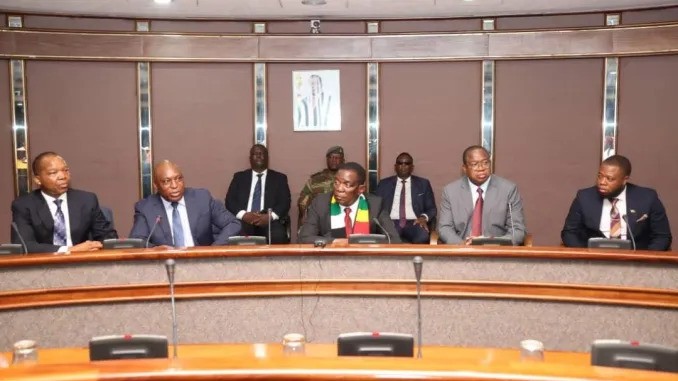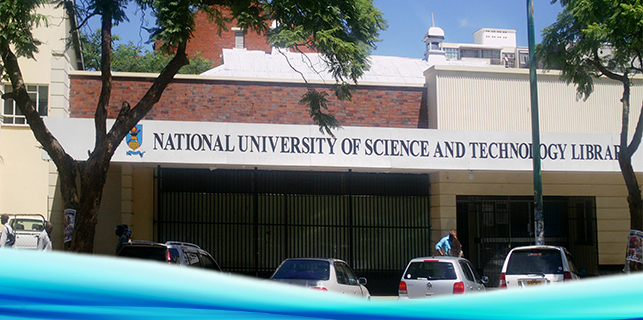The planned October introduction of a token currency in Zimbabwe, called bond notes, has stoked fears of the return of a much-loathed local currency by stealth.

By the time government adopted multiple foreign currencies in 2009, Zimbabwe’s transacting public had long abandoned the inflation-ravaged local dollar.
While the unofficial dollarisation brought some respite, it could not mask Zimbabwe’s structural economic problems for long – an agriculture sector struggling to recover from the redistribution of land from white commercial farmers to landless blacks, an uncompetitive manufacturing sector running on obsolete plant and feeling the strain of the sharp decline in farm output, as well as a chronic energy deficit.
While ostensibly running on a basket of foreign currencies, Zimbabwe had, by 2016, effectively rejected all the other currencies in favour of the US dollar which currently accounts for over 95 percent of all transactions.
It did not help matters that Zimbabwe’s main trading partner, South Africa’s currency devalued by as much as 50 percent against the greenback between 2009 and 2016.
All these factors combined to produce Zimbabwe’s cumulative $20 billion trade gap over the past six years, more than the country’s $14 billion nominal GDP. In graphic terms, Zimbabwe has shipped out more than its entire economy, in dollar terms, over the period.
There has been no Foreign Direct Investment (FDI) fillip to inject some cash into the economy. Zimbabwe remains the regional leper in terms of attracting investment and, with just over $2 billion in FDI flows since 2010 — the country only just beats strife-torn Somalia, which has seen $1.7 billion foreign investment over the same period.
By early 2016, a perfect storm long in the making finally hit Zimbabwe. Bank note shortages triggered long lines at the banks — a common feature of the dark days of hyperinflation — amid panic buying of basic foodstuffs driven by rumours of impending shortages which mothballed into a self-fulfilling prophesy.
Then in June, government defaulted on salaries for the bulk of its workers, only managing to pay the security forces.
By early May, the liquidity situation had degenerated badly enough to force Zimbabwe’s central bank to announce a battery of measures to manage the crisis – including reducing cash withdrawal limits and exports.
However, with its plans to introduce a token currency backed by a $200 million African Export Import Bank (Afrexim Bank) facility, the central bank could not trigger a more panicked reaction if it flung a hyperinflation-crazed cat in a dove house made of $100 trillion Zimbabwe dollar notes.
Amid mounting anxiety about a deepening economic crisis, the planned token currency — dubbed bond notes because of the bond facility backing their issuance — have triggered frequent street protests.
Former vice president Joice Mujuru has taken the government to court, arguing that it “cannot introduce a bond note and cause it to masquerade as a form of currency. The law has only two options; either the Zimbabwean dollar or foreign currencies’.
The overwhelming fear of the impending introduction of bond notes — slated to start circulating in October 2016 — is that President Robert Mugabe’s hard-up government could resort to printing again with disastrous consequences.
Those concerns have come too late, some market watchers contend. Zimbabwe has been effectively printing money since 2012, when it started using treasury bills to help fund its budget, they say.
In trying to explain the causes of Zimbabwe’s banknote shortage crisis, leading investment firm, Exotix Partners, which specializes in frontier and illiquid markets, says the southern African country has effectively had a local currency since 2012.
In a July 20, 2016 research note on Zimbabwean banks, Exotix says the notion that the government lost its capacity to print currency upon dollarization in 2009 is a myth.
“In our opinion, there have been two myths in the Zimbabwean economy post dollarisation. The first is that there is no local currency and (the) second is that the Government of Zimbabwe cannot print money,” Exotix said.
“To explain why these are myths, we have tracked the historical trend in ‘hard cash’ (i.e. cash that is immediately available to the banks in either notes and coins or in their nostro accounts abroad) and compared this to system deposits.”
In 2009, Zimbabwe’s banking system held $582 million, about half of total deposits, in ‘hard cash’ – immediately available to banks in notes and coins as well as accounts held outside the country.
By April 2016, hard cash had declined to $269 million, or just 6 percent of total deposits.
Bank executives believe a threshold of 20 percent of total deposits is needed to meet depositors’ hard cash requirements. Hence the ‘cash crisis’ that has intensified since the beginning of the year.
“With such a large shortfall in ‘hard cash,’ the first question we asked is, “why hasn’t the banking system collapsed already?” The answer to this question is a rebuttal of the myth that the Government of Zimbabwe cannot print money,” Exotix argues.
Official statistics show that government securities held by the banking sector rose from nil in 2009 to $1.2 billion at the end of April 2016.
“As the principal and interest payments on these government securities are settled on the RTGS, it is clear that the government has been using the issuance of this debt to effectively print money. This money printed and placed in the RTGS has helped keep the RBZ liquid in local US dollars,” Exotix said.
A Harare-based financial analyst who refused to be named for professional reasons, concurs.
“The aggressive issuance of TBs by government has had the effect of sucking liquidity out of the market. Ordinarily, governments print money to fund their domestic borrowings, but in this case, the issue of TBs has effectively become a de facto money printing exercise,” he said.
Finance Minister Patrick Chinamasa has denied that government’s increased reliance on TBs had contributed to the bank note shortage. He insists that government has consistently made good on maturing TBs, a factor which major banks – CBZ and ZB, who both hold over half of total TBs in issue — have backed up in recent weeks.
However, the opposition accuses the skint government of manipulating the RTGS system to pay its ballooning domestic debt.
Exotix identifies two types of US dollars in Zimbabwe’s economy – physical banknote dollars and Real Time Gross Settlement (RTGS) dollars, which are reportedly trading at 1:1.10 to the greenback on an emerging black market for those who want to cash in on their RTGS dollars without the inconvenience of cash withdrawal or time limits.
The firm says the ‘disappearing deposits’ have simply been converted into RTGS dollars, now effectively Zimbabwe’s local currency.
The financial strain under which the government finds itself provides a major test to its stated resolve to maintain discipline and not print unbacked currency beyond the $200 million facility.
History, in the pre-dollarisation period and, more recently since 2012, suggests this is a test the Mugabe government is unlikely to pass.-The Source






